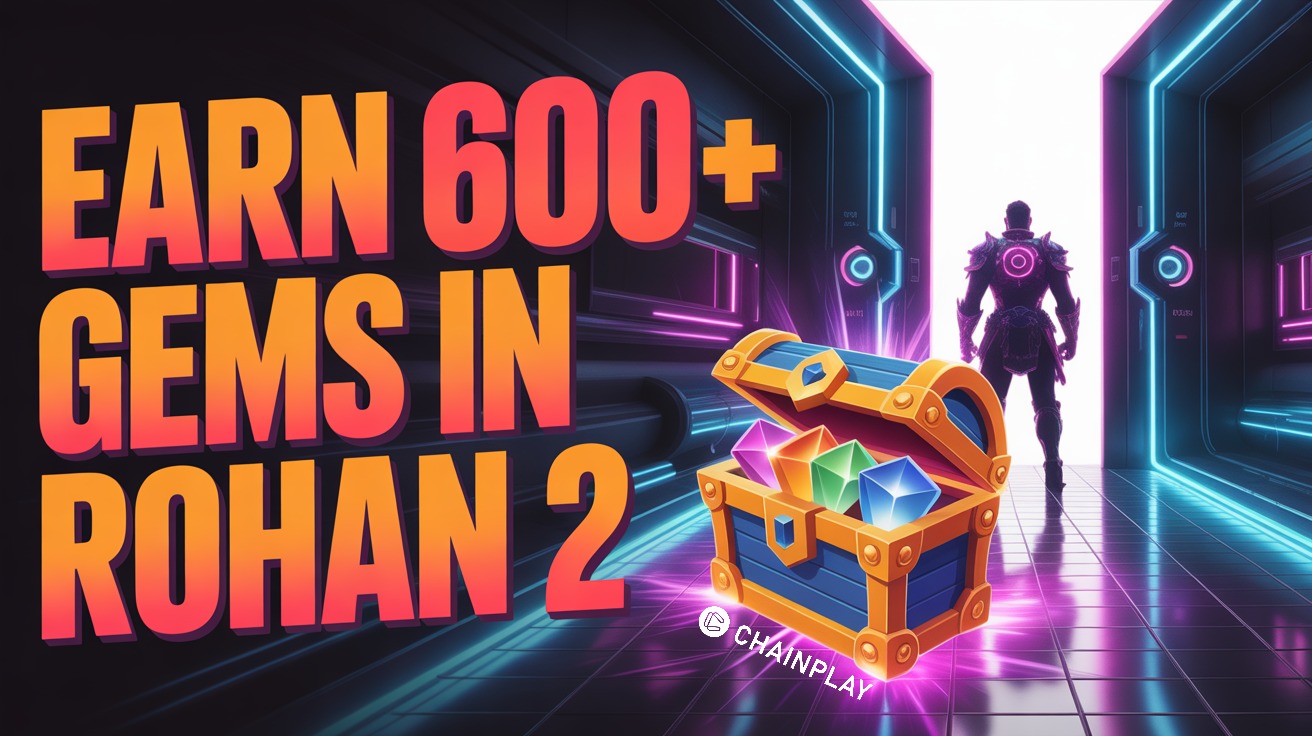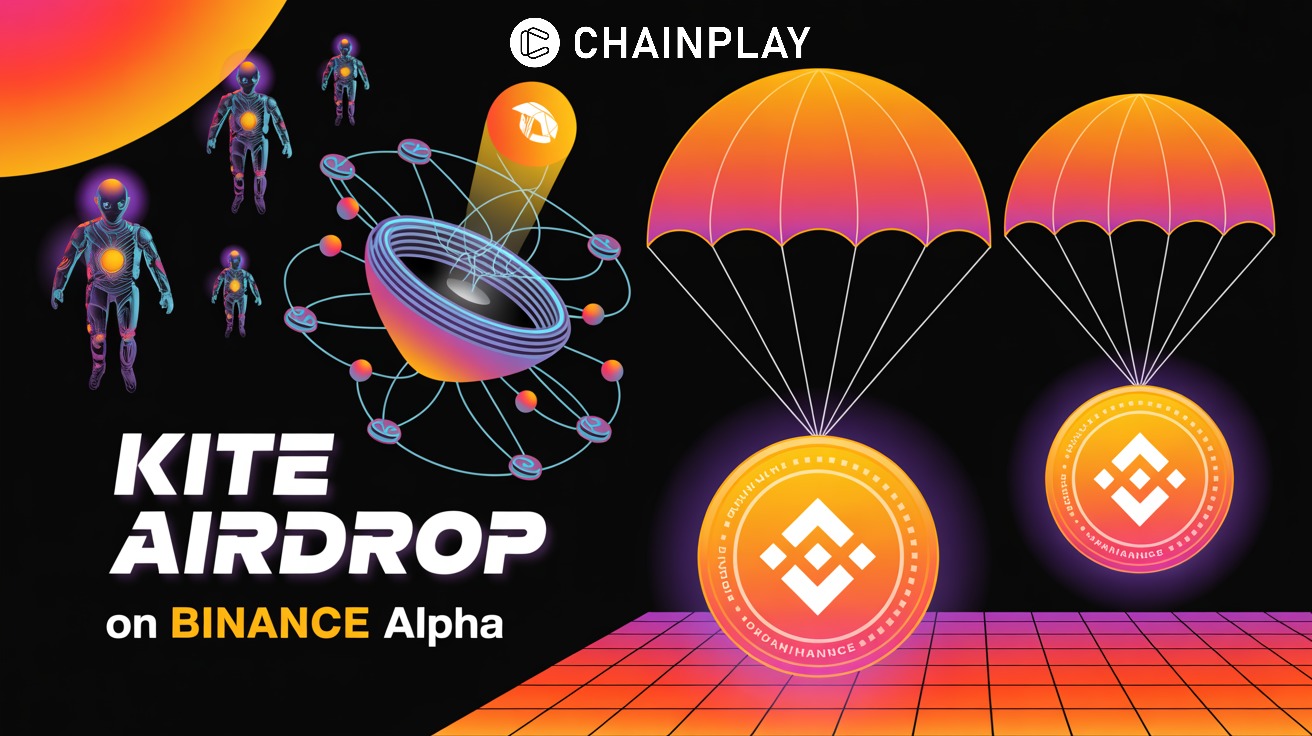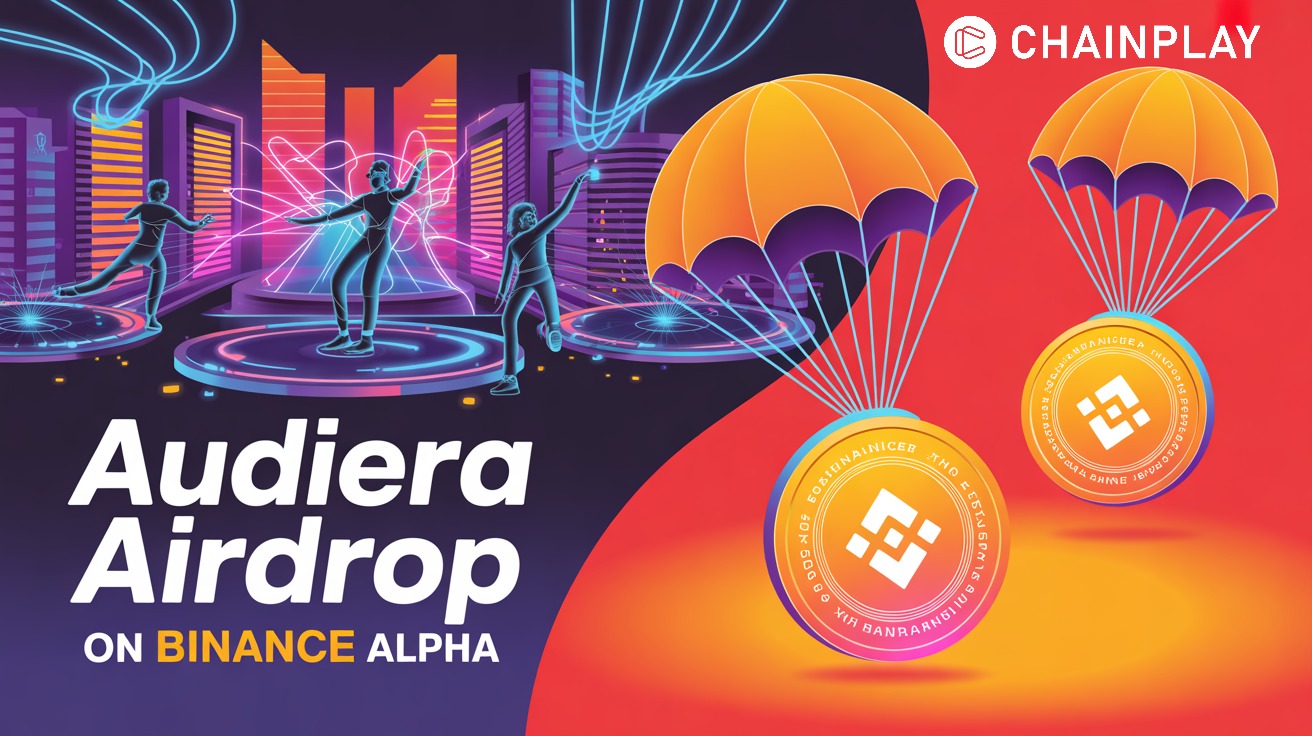News Research
What Is SocialFi? Top 10 Crypto Social Media Platforms 2025
ChainPlay
•
one year ago
Share :

In most social media platforms, the founders or the companies behind it exercise central authority over what happens. They can determine the type of posts published on their website and the type of individuals allowed.
However, centralization is slowly being eliminated due to the increasing interest in Web3 and DeFi projects. This has infiltrated the social media sector due to the emergence of social media platforms introducing decentralization. This article explains the innovative concept of SocialFi, combining decentralized finance (DeFi) with Web2 social media networks to ensure decentralization.
What Is SocialFi?
According to data from CoinGecko, top SocialFi coins had a market capitalization of over $2.4 billion as of October 22nd, 2024. Now, there's the question of “what is SocialFi?” It is simply the combination of social media and decentralized finance to ensure users can earn rewards for their participation in a social media platform. SocialFi, short for Social Finance, is a concept of social media where there's no central authority. Instead, content creators and users receive valuable and tradable assets for creating and consuming content.
The core part of SocialFi networks usually includes content creators, influencers, and participants, with all of them getting the opportunity to monetize their social media engagement. In most cases, rewards come in cryptocurrencies. However, other digital assets such as NFTs play a key role, helping in digital ownership and identity management. As part of the structure, there's the existence of DAOs to help both developers and users contribute to the platform's decision-making.
How Does SocialFi Work?
There are key features that combine to ensure the smooth operation of most SocialFi platforms and they include:
DAOs And Social Tokens
DAOs And social tokens are an integral part of SocialFi crypto platforms, creating a means by which users can vote on important decisions on the platform. Decentralized Autonomous Organizations (DAOs) are the governance system of these platforms, ensuring no central authority takes control of users' data. For instance, DAOs help prevent the developers of the platforms from taking illegal control of certain segments of the platform.
Every decision-making process comes down to the DAO, with users utilizing the network's dedicated social tokens to vote. Besides the general DAO tokens, creators on the platform can also create personalized tokens. Holders of these tokens can make decisions that influence the type of content their creators make. Also, social tokens serve as the means through which creators and users can earn rewards for their participation.
Censorship
Working to prevent censorship makes up a large part of the SocialFi operational process. In many Web2 social media platforms, there are dedicated teams or departments that parse and regulate content posted on the platform. How does this work on SocialFi platforms?
Web3 social media platforms try to create a balance by depending on blockchain technology to parse content that gets posted. Through labeling of on-chain data, nodes on the chain can categorize posts based on the topic and the type of words contained in the content. Hence, a node can block a post from being posted on the SocialFi platform if it contains harmful words. As part of it is mode of operation, content control is not handled by a centralized team.
Monetization
Monetization is a key design of SocialFi platforms. These decentralized social media often introduce social and utility tokens to incentivize users and content creators to participate. Sometimes content creators can also develop their own tokens to customize user interaction. The benefits are not only about users earning rewards, it also leads to a reduction in spam and quality content creation.
Pros And Cons Of Web3 Social Media Platforms
There are many benefits content creators and consumers can get from the existence of Web3 social media platforms including:
Right to Speech and no Censorship
Unlike Web2 platforms, decentralized social media platforms don't have a centralized team that controls content. While there's no censorship or blocking, special blockchain algorithms ensure dangerous and harmful content is not allowed.
Decentralization
Decentralization is one of the primary benefits of SocialFi for content creators and users, as it removes centralized authorities. Many Web2 social media platforms are centralized, with users and institutional data stored in a single server. The corporations in charge of these media platforms have total control of users' data and privacy.
However, SocialFi gives users freedom and control over their data and an opportunity to monetize them. Moreover, since users' data are stored in various web nodes instead of a single server, it improves users' privacy in case of data breaches.
Protection of Personal Information
In many Web2 social media platforms, users are forced to submit personal information like full government name, date of birth, ID documents, and addresses. In the event of a hack and other cybersecurity breaches, it can lead to user-sensitive information leaking. One of the benefits of SocialFi platforms is that it doesn't require the input of personal user information.
Compensation and Digital Copyright
Unlike Web2 social media networks, content creators are well rewarded and compensated in full for their work. Moreover, they have full access and control of their work, eliminating the need for intermediaries while selling their work to buyers. Hence, those who are buying from them don't face the risk of copyright infringement. Users of these SocialFi platforms are also rewarded for performing social activities like liking, commenting, and voting on posts.
Just like the benefits, there are still some challenges that SocialFi projects must overcome such as:
Long-Term Economic Models
One of the biggest setbacks web3 social media platforms usually face is the lack of sustainable economic models. Sometimes these platforms promise users massive incentives and fail to keep them in the long term. Moreover, many of the projects are often experimental and usually appear when the crypto market is in a favorable season. SocialFi projects need to develop economic models that can survive different cycles of the crypto market.
How well the tokens associated with these web3 social media platforms perform in the market matters. For instance, if a bad narrative about any of these SocialFi platforms develops, it can directly affect their native tokens. This in turn affects the rewards and investments users might have.
Lack of Scalable Infrastructure
It is a fact that centralized social media platforms deal with larger volumes of data than their decentralized counterparts. Data from Kinsta shows Facebook handles over 510,000 comments and 293,000 status updates every minute. Furthermore, there are 4 million posts likes and 136,000 photo uploads within the same timeframe. This makes this social media platform to deal with around 4 Petabytes of data every day.
If a centralized social media platform can handle this, what about the Web3-based counterparts? Although it will be a challenge to reach similar milestones, many crypto developers are creating blockchains that can handle the data loads required by SocialFi platforms. For instance, blockchain projects like DeSo say they are building an infrastructure where SocialFi apps can be developed. By combining sharding, indexing, warp sync, and block size management, they are aiming to process 80 posts per second for a four million user base.
How Is The Future Of SocialFi?
Changpeng Zhao, founder and former CEO of Binance has spoken about the future of the Web3 sector during the closing of a $500 million investment fund in 2022. The current trajectory of SocialFi networks aligns with his words of values, people, and economies combining.
“In a Web3 environment, the connection between values, people, and economies is essential, and if these three elements come together to build an ecosystem, it will accelerate the mass adoption of blockchain technology and crypto,” he said.
Web3 social media platforms are beginning to gain traction with more investors aligning with the new method of social interaction. Furthermore, there's a shift within the financial sector towards decentralized finance, improving the potential of SocialFi networks. Despite downturns in scalability and economic models, SocialFi networks can leverage DeFi principles for sustainability.
Top 10 Crypto Social Media Platforms 2025
Below are some of the top crypto social media platforms that are trying to bring decentralized control to users and content creators.
CyberConnect (CYBER)
CyberConnect (CYBER) uses numerous blockchain technologies such as account abstraction and interoperability to achieve its goal of giving power and profits back to the users and creators. This is a social graph protocol that utilizes Web3 technology to help users and developers take control of their content and digital identities. CyberConnect was established on Ethereum and other EVM-compatible blockchains, ensuring that users are adequately compensated for their data.
As a web3 social network, CyberConnect uses its CYBER tokens for governance. These tokens are also used for paying transaction fees on the platform and purchasing CyberProfiles, which are premium usernames.
Theta Network (THETA)
Theta is more of a video delivery network (VDN) but is still classified under SocialFi due to the mode of operation. Theta Network is a decentralized platform that removes high costs and centralization from the video streaming sector by redistributing unused computational resources. Users on this platform can earn rewards by engaging in content and sharing their resources.
There are two major tokens: THETA for governance and TFUEL for utility. Furthermore, there are many advantages to this project building on EVM-compatible multi-blockchain architecture. It allows them to integrate many other features and functions into their SocialFi platform such as DAOs, NFTs, and decentralized applications.
GeoJam
GeoJam is another crypto social network, that allows users and content creators to earn compensation for their activities on the platform. On the platform, users can perform many activities such as sharing their moments, reliving their experiences, and connecting with friends. GeoJam claims that it is backed by numerous celebrities such as Tyga, Machine Gun Kelly, Mariah Carey, and many others.
The JAM token is a major part of this web3 network, providing users the opportunity to participate in governance. An important benefit of this token is that users can earn a 12% APY while contributing to the ecosystem by staking.
Friend.tech
Friend.tech was established on the Base blockchain, designed to change the concept of social media by allowing users to buy and sell "Keys.” These keys are like shares in the stock market and they represent users' social influence, which can be interchanged for tradable assets. Users get the opportunity to earn massive rewards for their social media presence while changing the dynamics of social interaction. Nevertheless, the Friend.tech ecosystem has been faulted for security concerns and scalability issues.
XCAD Network (XCAD)
Many video social media platforms like YouTube often don't offer users the opportunity to earn or influence what happens on the platform. XCAD Network (XCAD) is a Watch-to-Earn platform that is changing the narrative. As a SocialFi crypto network, the tokenization models on their platform reduce the differences between creators and fans.
Content creators on this platform can issue their crypto tokens, and viewers can earn them when they watch their videos. These tokens also serve as governance mechanisms, allowing fans to influence the type of videos creators make. An interesting part is that Ethereum, Zilliqa, Binance Smart Chain, and Polygon are among the blockchains XCAD Network operates. This makes it more accessible for content creators and users.
Open Campus (EDU)
Open Campus is a combination of education, social media, and blockchain technology. Educational institutions, content creators, learners, and educators are all welcome to this platform. It is a web3 social media network for education, allowing people to be compensated for teaching or learning. Anyone can participate and earn the EDU tokens and there are other third-party platforms like TinyTap, GEMS, and Genesis integrated into Open Campus. Besides incentivizing participants, the EDU token is also used in governance, allowing users to engage in the decision-making process.
Chingari (GARI)
Chingari (GARI) is one of the Web3 social media platforms that are heavily incentivizing users for their participation. Its native token, GARI is an integral part of their ecosystem, helping reward creators and users and influence decisions. This SocialFi platform was built on the Aptos blockchain to help improve the speed of transactions and scalability. Besides a good user experience, this integration allows Chingari to process more than 1000 transactions per second.
On this platform, users can engage in liking, sharing, or commenting on content on the platform. They can also earn more GARI tokens when they participate in direct interactions in live and audio chat rooms.
Hive (HIVE)
Hive is just like a normal social media platform although the major difference is that it is not centralized like the rest. It uses its own blockchain technology and allows users to earn crypto rewards when they create, consume, and vote on the quality of content. There's no central authority and its blockchain enables improved scalability and fast transactions.
This crypto social media platform incentivizes users with their HIVE tokens while also promoting freedom of speech and no censorship. Furthermore, users are allowed to retain access and control of their content and data. The features Hive offers are beyond the blogging sector, extending to commerce and video games.
Cheelee (CHEEL)
Cheelee (CHEEL) was developed within the Binance Smart Chain, with a dual-token system of CHEEL and LEE tokens. It is another SocialFi platform that gives crypto rewards to users whenever they engage in creators’ content. The CHEEL token on this platform is used for governance and other things like upgrading NFT glasses and advertisements. LEE is the utility token of this platform, used mainly for paying transaction fees and receiving rewards.
Cheelee introduced advanced algorithms to ensure there's fair distribution on their platform and the prevention of cybersecurity risks. Crypto strategies like token buyback and burning have been used to ensure they keep CHEEL and LEE tokens from the effects of market volatility. All these efforts are to ensure users have a decentralized and secure environment for earning.
Steem (STEEM)
This crypto social network uses a “Proof of Brain" social consensus mechanism in its operations, giving crypto rewards to users to create and engage in content. Users can monetize their participation on the platform by posting, liking, commenting, and voting on content quality. This platform uses two tokens STEEM and Steem Dollars (SBD) to reward users.
The technical architecture of Steem is quite solid, surpassing Bitcoin and Ethereum in terms of high transaction volumes. Ultimately, the delegated proof of stake (DPoS) consensus integrated into their platform allows for enhanced scalability and faster transaction processing. It has massive potential, as entrepreneurs, developers, and normal social media users can participate in activities on this platform.
FAQ
What Is SocialFi in Crypto?
It is an abbreviation for social finance, combining decentralized finance and social media to create a platform that is free from censorship. Users have control of their data and creators are adequately compensated for their work.
What Are the Challenges of SocialFi?
Scalability and the economic models of these SocialFi platforms remain some of the primary challenges they face.
Examples of SocialFi?
Some examples of SocialFi platforms include Friend.tech, Hive, Cheelee, Steem, GeoJam, XCAD Network, and many others.
What Are the Components of SocialFi?
Certain integrations and features make up the operational process of Web3 social media platforms. Some of the primary components include Decentralized Autonomous Organizations (DAOs), censorship prevention systems, and monetization mechanisms.
What Is the Future of Web3 Social Media Platforms?
The future of crypto social networks is very bright with the massive traction decentralized finance and Web3 is getting. It is expected that the SocialFi sector will grow into a very large industry.
Share this article
#Other
Latest News

Earn 600+ Gems in ROHAN 2’s Immutable Onboarding Quest
48 minutes ago

Innovate NY Launches New York City Student Education
14 hours ago

Binance Announces Kite (KITE) Alpha Launch and Airdrop
yesterday

Bitcoin in gaming: Sports betting on BTC
yesterday

Audiera (BEAT) To Launch on Binance Alpha on November
yesterday
Related articles

Binance is set to launch Kite (KITE) on November 3 on Alpha, featuring an airdrop for eligible traders who hold Alpha Points. The airdrop is on a first-come, first-served basis and will consume 15 Alpha Points. Kite is a next-generation blockchain built for autonomous AI agents.
ChainPlay
•
yesterday

Innovate NY PAC's NYC blockchain education plan, supporting A. Cuomo, aims to build a STEM facility and generate $2.8B in annual output.
ChainPlay
•
14 hours ago

ROHAN 2 and Immutable launch an Onboarding Quest with 600+ Gem rewards and upcoming $CROSS token prizes for players.
ChainPlay
•
48 minutes ago



